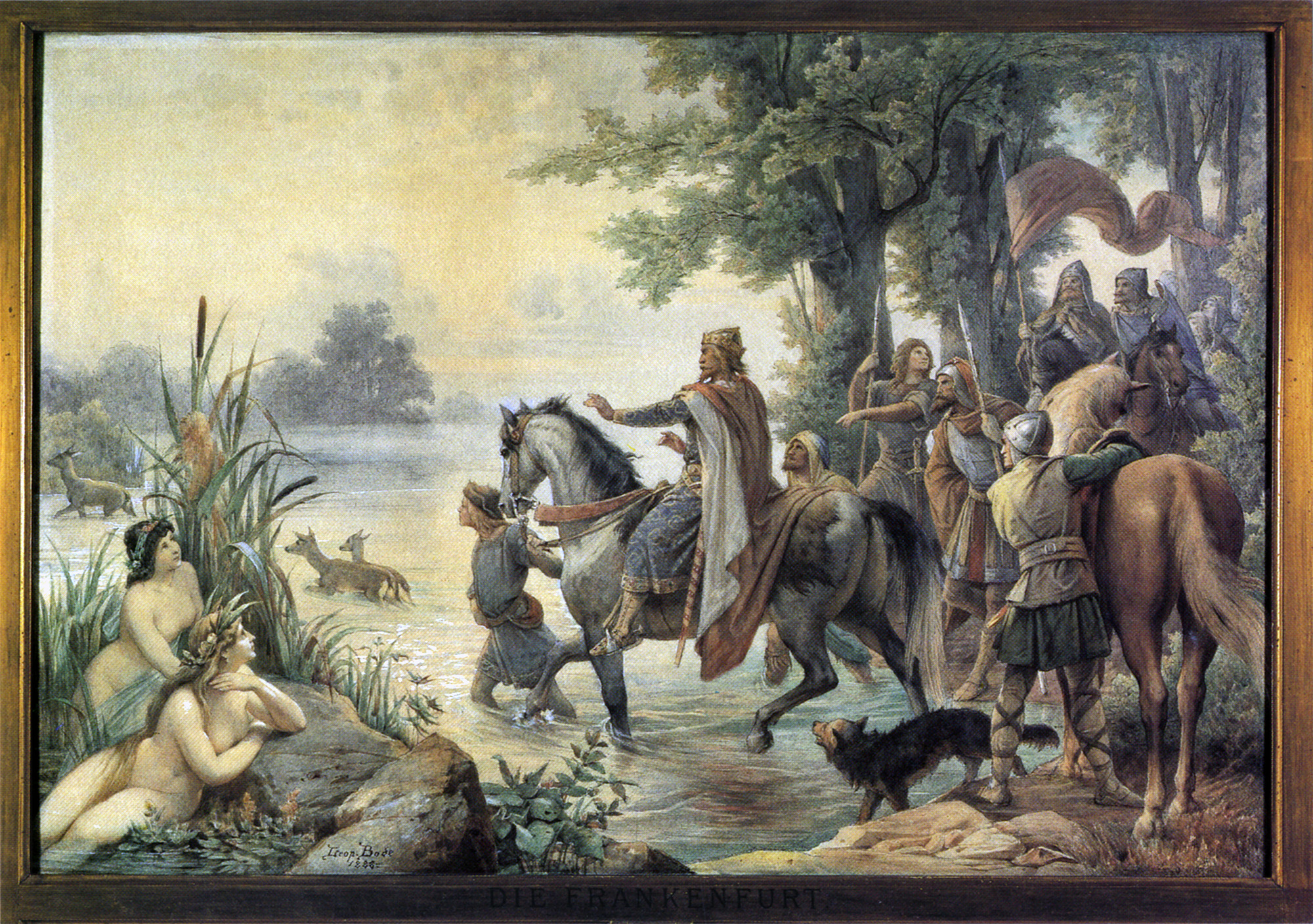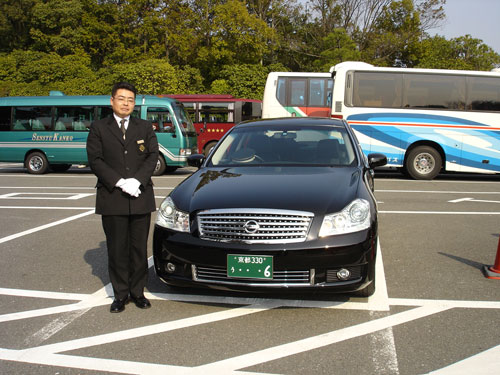|
Eugène Weidmann
Eugen Weidmann (5 February 1908 – 17 June 1939) was a German criminal and serial killer who was executed by guillotine in France in June 1939, the last public execution in France. Early life Weidmann was born in Frankfurt am Main to the family of an export businessman and went to school there. He was sent to live with his grandparents at the outbreak of World War I. During this time he started stealing. Later in his twenties, he served five years in Saarbrücken jail for robbery. During his time in jail, Weidmann met two men who would later become his partners in crime: Roger Million and Jean Blanc. After their release from jail, they decided to work together to kidnap rich tourists visiting France and steal their money. They rented a villa in Saint-Cloud near Paris for this purpose. Murders Their first kidnapping attempt ended in failure because their victim struggled too hard, forcing them to let him go. In July 1937, they made a second attempt, Weidmann having made the ac ... [...More Info...] [...Related Items...] OR: [Wikipedia] [Google] [Baidu] |
Frankfurt
Frankfurt am Main () is the most populous city in the States of Germany, German state of Hesse. Its 773,068 inhabitants as of 2022 make it the List of cities in Germany by population, fifth-most populous city in Germany. Located in the foreland of the Taunus on its namesake Main (river), Main, it forms a continuous conurbation with Offenbach am Main; Frankfurt Rhein-Main Regional Authority, its urban area has a population of over 2.7 million. The city is the heart of the larger Rhine-Main metropolitan region, which has a population of more than 5.8 million and is Germany's Metropolitan regions in Germany, second-largest metropolitan region after the Rhine-Ruhr metropolitan region, Rhine-Ruhr region and the List of EU metropolitan regions by GDP#2021 ranking of top four German metropolitan regions, fourth largest metropolitan region by GDP in the European Union (EU). Frankfurt is one of the ''de facto'' four main capitals of the European Union (alongside Brussels, Luxembourg Cit ... [...More Info...] [...Related Items...] OR: [Wikipedia] [Google] [Baidu] |
Kidnapping
Kidnapping or abduction is the unlawful abduction and confinement of a person against their will, and is a crime in many jurisdictions. Kidnapping may be accomplished by use of force or fear, or a victim may be enticed into confinement by fraud or deception. Kidnapping is distinguished from false imprisonment by the intentional movement of the victim to a different location. Kidnapping may be done to demand a ransom in exchange for releasing the victim, or for other illegal purposes. Kidnapping can be accompanied by bodily injury, which in some jurisdictions elevates the crime to aggravated kidnapping. Kidnapping of a child may be a distinct crime, depending on jurisdiction. Motives Kidnapping can occur for a variety of reasons, with motivations for the crime varying particularly based on the perpetrator. Ransom The kidnapping of a person, most often an adult, for ransom is a common motivation behind kidnapping. This method is primarily utilized by larger organizations, ... [...More Info...] [...Related Items...] OR: [Wikipedia] [Google] [Baidu] |
Theatre Producer
Theatre or theater is a collaborative form of performing art that uses live performers, usually actors to present experiences of a real or imagined event before a live audience in a specific place, often a stage. The performers may communicate this experience to the audience through combinations of gesture, speech, song, music, and dance. It is the oldest form of drama, though live theatre has now been joined by modern recorded forms. Elements of art, such as painted scenery and stagecraft such as lighting are used to enhance the physicality, presence and immediacy of the experience. Places, normally buildings, where performances regularly take place are also called "theatres" (or "theaters"), as derived from the Ancient Greek θέατρον (théatron, "a place for viewing"), itself from θεάομαι (theáomai, "to see", "to watch", "to observe"). Modern Western theatre comes, in large measure, from the theatre of ancient Greece, from which it borrows technical terminolog ... [...More Info...] [...Related Items...] OR: [Wikipedia] [Google] [Baidu] |
Forest Of Fontainebleau
The forest of Fontainebleau (, or , meaning, in old French, "forest of Ericaceae, heather") is a mixed deciduous forest lying southeast of Paris, France. It is located primarily in the arrondissement of Fontainebleau in the southwestern part of the Departments of France, department of Seine-et-Marne. Most of it also lies in the canton of Fontainebleau, although parts of it extend into adjoining cantons of France, cantons, and even as far west as the town of Milly-la-Forêt in the neighboring department, Essonne. Several ''communes of France, communes'' lie within the forest, notably the towns of Fontainebleau and Avon, Seine-et-Marne, Avon. The forest has an area of . History Forty thousand years ago, nomadic populations settled around the forest. Various traces of their presence have been discovered: carved stone tools, bones of such animals as bears, elephants, rhinos, giant stags. More than 2,000 caves with rock carvings are scattered across the forest. They are attributed to ... [...More Info...] [...Related Items...] OR: [Wikipedia] [Google] [Baidu] |
Tours
Tours ( ; ) is the largest city in the region of Centre-Val de Loire, France. It is the Prefectures in France, prefecture of the Departments of France, department of Indre-et-Loire. The Communes of France, commune of Tours had 136,463 inhabitants as of 2018 while the population of the whole functional area (France), metropolitan area was 516,973. Tours sits on the lower reaches of the Loire, between Orléans and the Atlantic Ocean, Atlantic coast. Formerly named Caesarodunum by its founder, Roman Augustus, Emperor Augustus, it possesses one of the largest amphitheaters of the Roman Empire, the Tours Amphitheatre. Known for the Battle of Tours in 732 AD, it is a National Sanctuary with connections to the Merovingian dynasty, Merovingians and the Carolingian dynasty, Carolingians, with the Capetian dynasty, Capetians making the kingdom's currency the Livre tournois. Martin of Tours, Saint Martin and Gregory of Tours were from Tours. Tours was once part of Touraine, a former provi ... [...More Info...] [...Related Items...] OR: [Wikipedia] [Google] [Baidu] |
French Riviera
The French Riviera, known in French as the (; , ; ), is the Mediterranean coastline of the southeast corner of France. There is no official boundary, but it is considered to be the coastal area of the Alpes-Maritimes department, extending from the rock formation Massif de l'Esterel to Menton, at the France–Italy border, although some other sources place the western boundary further west around Saint-Tropez or even Toulon. The coast is entirely within the Provence-Alpes-Côte d'Azur region of France. The Principality of Monaco is a semi-enclave within the region, surrounded on three sides by France and fronting the Mediterranean. The French Riviera contains the seaside resorts of Cap-d'Ail, Beaulieu-sur-Mer, Saint-Jean-Cap-Ferrat, Villefranche-sur-Mer, Antibes, Juan-les-Pins, Cannes, and Théoule-sur-Mer. ''Riviera'' is an Italian word that originates from the ancient Ligurian territory of Italy, wedged between the Var and Magra rivers. ''Côte d'Azur'' is origin ... [...More Info...] [...Related Items...] OR: [Wikipedia] [Google] [Baidu] |
Chauffeur
A chauffeur () is a person employed to drive a passenger motor vehicle, especially a luxury vehicle such as a large sedan or a limousine. Initially, such drivers were often personal employees of the vehicle owner, but this has changed to specialist chauffeur service companies or individual drivers that provide both driver and vehicle for hire. Some service companies merely offer the driver. History The term ''chauffeur'' comes from the French term for stoker because the earliest automobiles, like their railroad and sea vessel counterparts, were steam-powered and required the driver to stoke the engine. The chauffeur also maintained the car, including routine maintenance and cleaning, and had to be a skilled mechanic to deal with breakdowns and tyre punctures en route, which were very common in the earliest years of the automobile. Only the wealthy could afford the first automobiles, and they generally employed chauffeurs rather than driving themselves. A 1906 article ... [...More Info...] [...Related Items...] OR: [Wikipedia] [Google] [Baidu] |
Traveller's Cheque
A traveller's cheque is a medium of exchange that can be used in place of the currency of a country. Each cheque is denominated in a preprinted fixed, round, amount of one of a number of major world currencies; it has two panels for a signature. The purchaser signs one panel of each cheque on receiving it; to use it, it is signed on the second panel and dated in the presence of the payee, who accepts it if the signatures match. It can then be deposited into a bank account in the same way as a normal cheque; payment was guaranteed if the signatures matched, even if a cheque had been used fraudulently, for example stolen, encouraging merchants to accept them routinely. While it was possible for the issuer to go out of business, invalidating cheques, most issuers were large, stable, businesses. Traveller's cheques were widely used from the 1850s to the 1990s by people travelling in foreign countries instead of cash, mainly before the introduction of payment cards and later elect ... [...More Info...] [...Related Items...] OR: [Wikipedia] [Google] [Baidu] |
Château De Malmaison
The Château de Malmaison () is a French château situated near the left bank of the Seine, about west of the centre of Paris, in the commune of Rueil-Malmaison. Formerly the residence of Empress Joséphine de Beauharnais, along with the Tuileries it was the headquarters of the French government from 1800 to 1802, and Napoleon's last residence in France at the end of the Hundred Days in 1815. History Joséphine de Beauharnais bought the manor house in April 1799 for herself and her husband, General Napoléon Bonaparte, the future Napoléon I of France, at that time away fighting the Egyptian Campaign. Malmaison was a run-down estate, west of central Paris that encompassed nearly of woods and meadows. Upon his return, Bonaparte expressed fury at Joséphine for purchasing such an expensive house with the money she had expected him to bring back from the Egyptian campaign. The house, for which she had paid well over 300,000 francs, needed extensive renovations; she spen ... [...More Info...] [...Related Items...] OR: [Wikipedia] [Google] [Baidu] |
Richard Wagner
Wilhelm Richard Wagner ( ; ; 22 May 181313 February 1883) was a German composer, theatre director, essayist, and conductor who is chiefly known for his operas (or, as some of his mature works were later known, "music dramas"). Unlike most opera composers, Wagner wrote both the libretto and the music for each of his stage works. Initially establishing his reputation as a composer of works in the romantic vein of Carl Maria von Weber and Giacomo Meyerbeer, Wagner revolutionised opera through his concept of the ''Gesamtkunstwerk'' ("total work of art"), whereby he sought to synthesise the poetic, visual, musical and dramatic arts, with music subsidiary to drama. The drama was to be presented as a continuously sung narrative, without conventional operatic structures like Aria, arias and Recitative, recitatives. He described this vision in a List of prose works by Richard Wagner, series of essays published between 1849 and 1852. Wagner realised these ideas most fully in the first ... [...More Info...] [...Related Items...] OR: [Wikipedia] [Google] [Baidu] |








